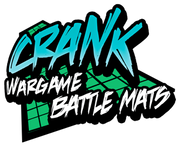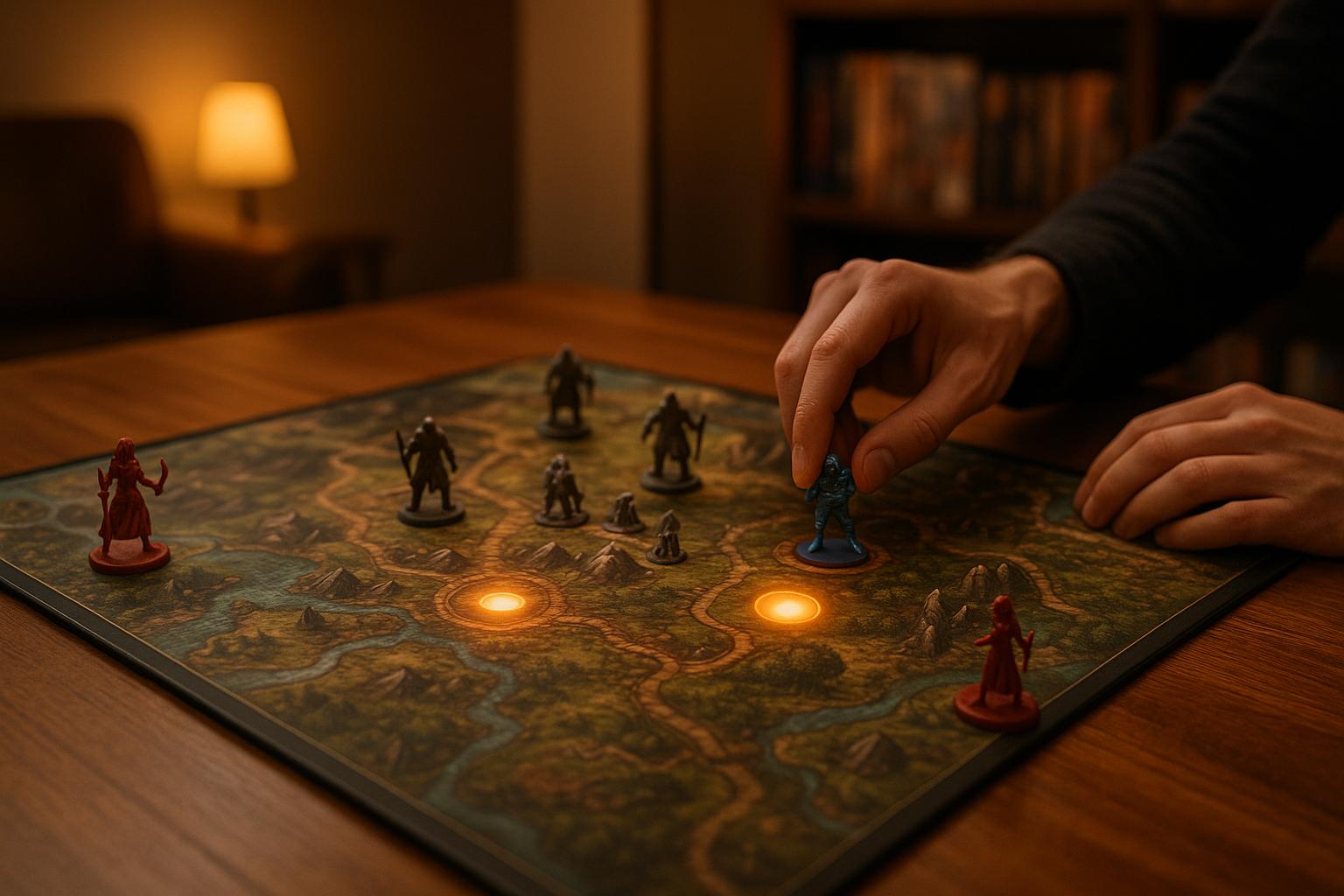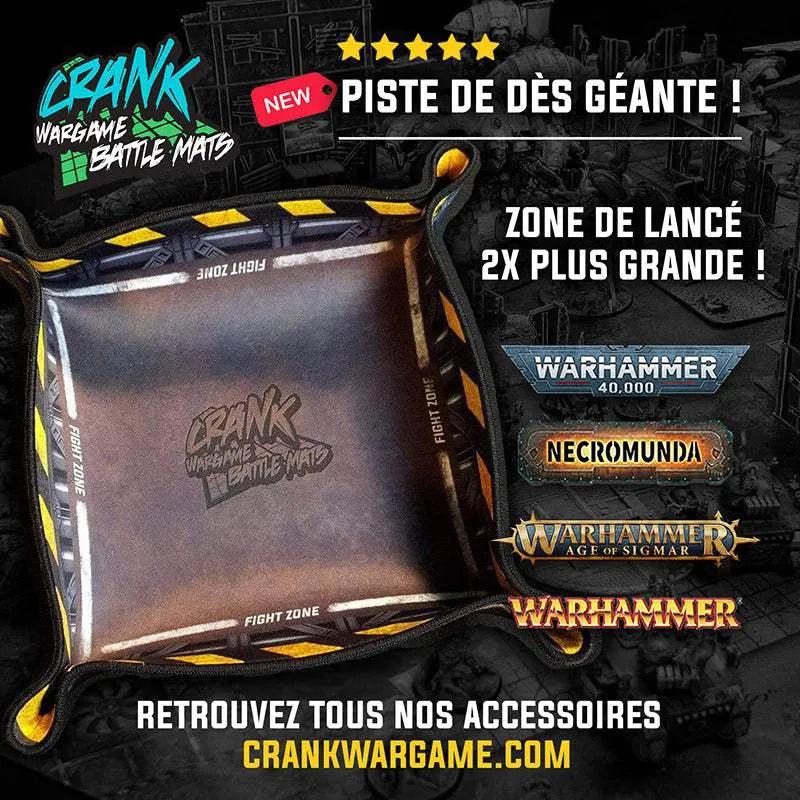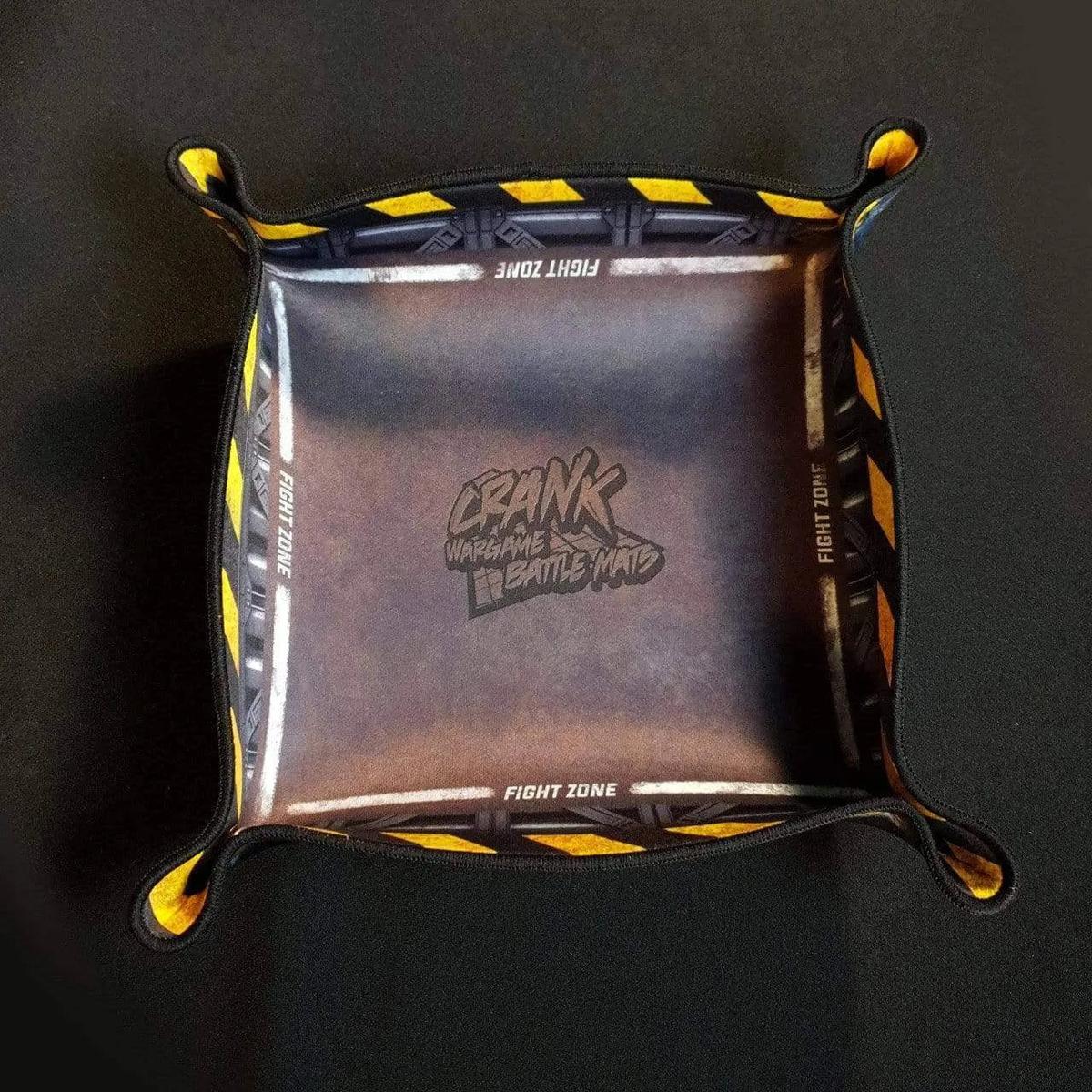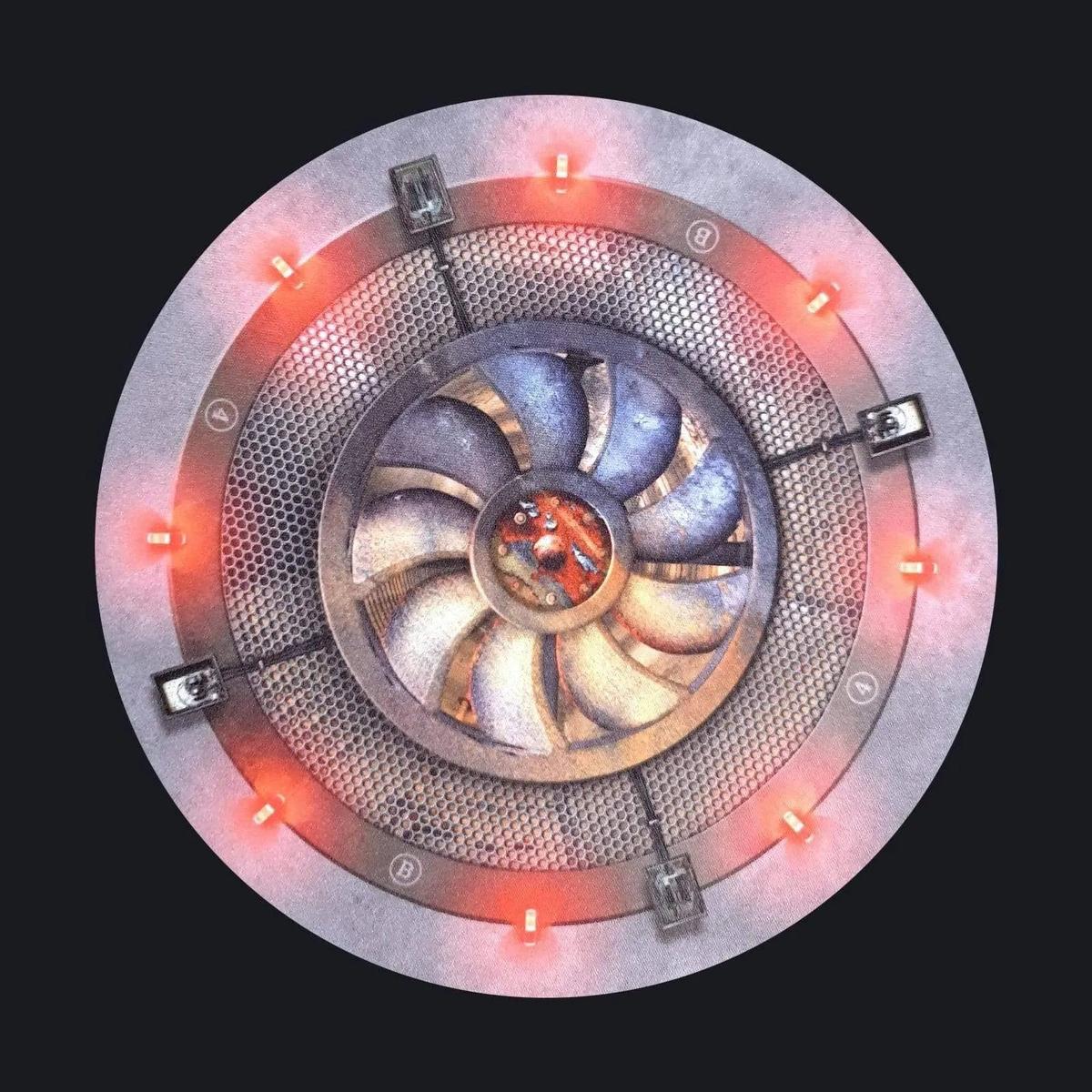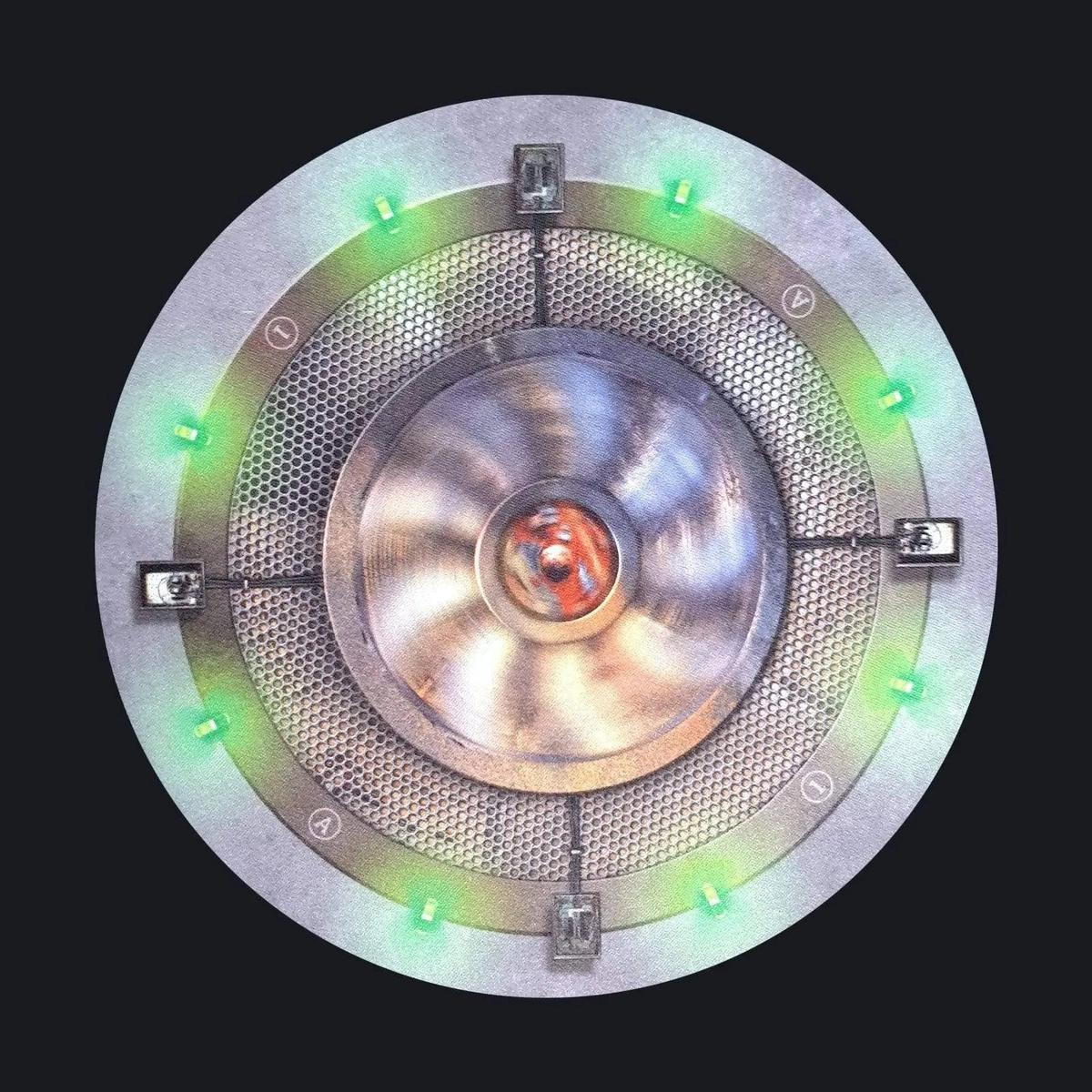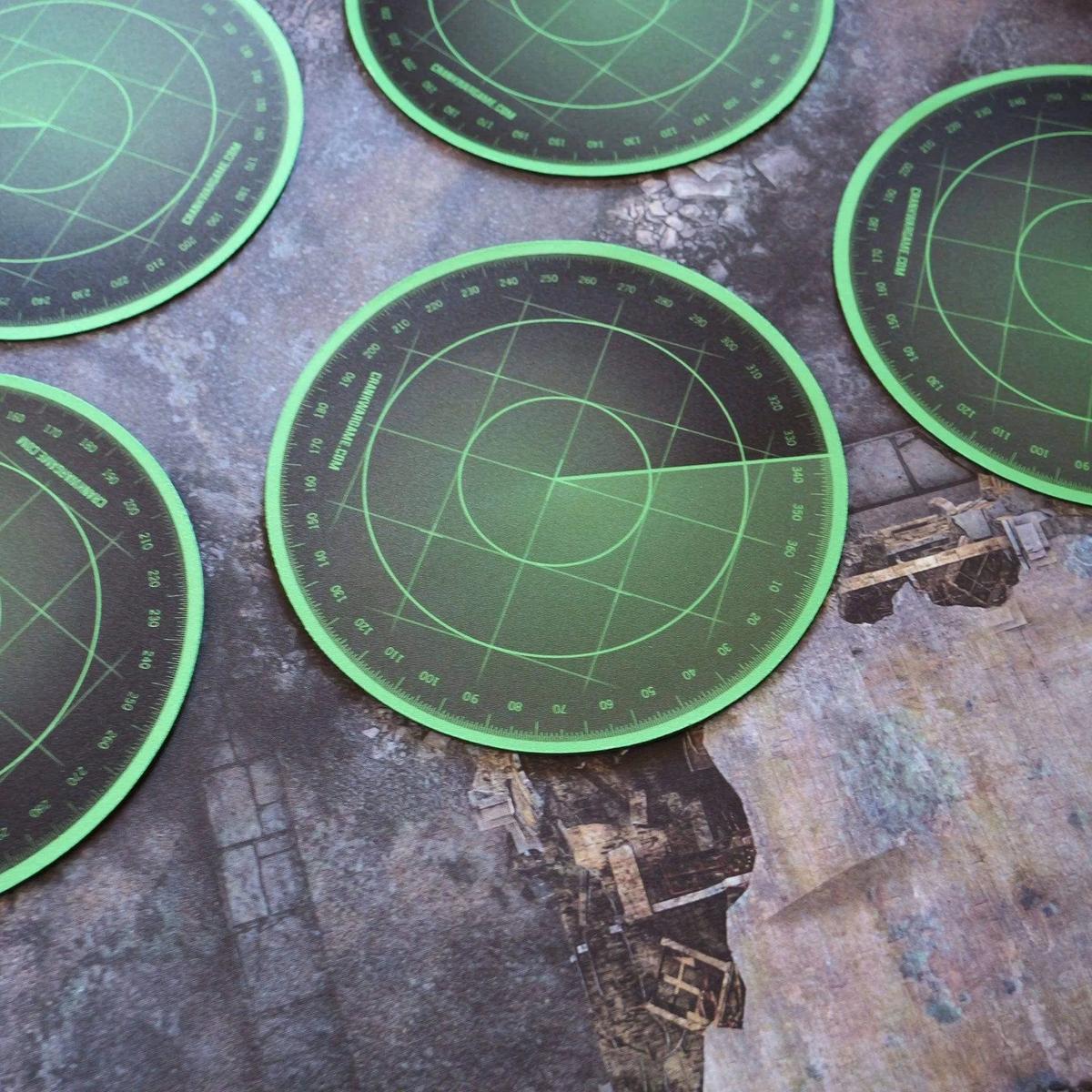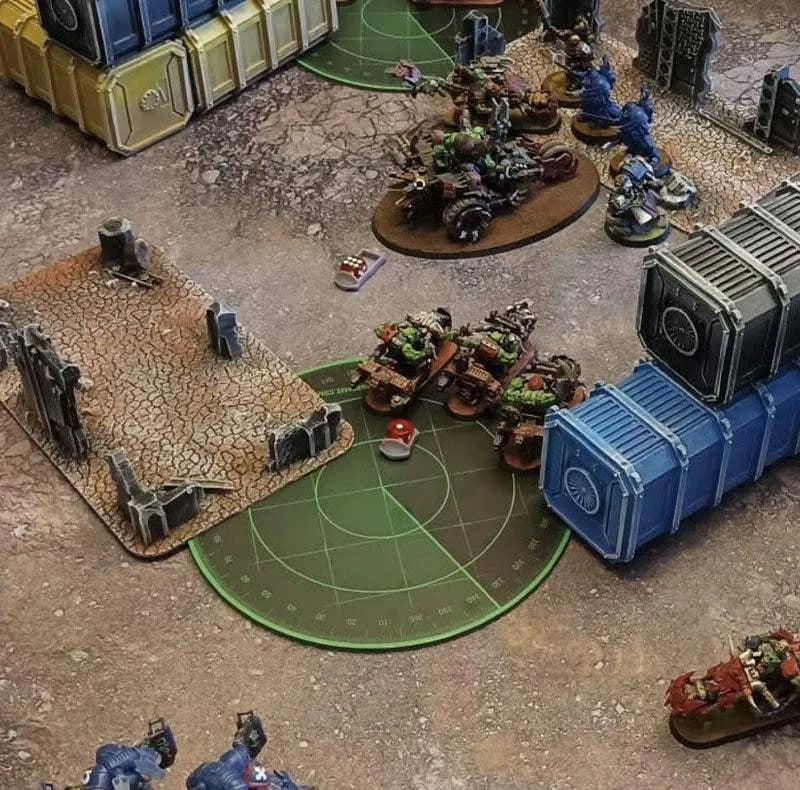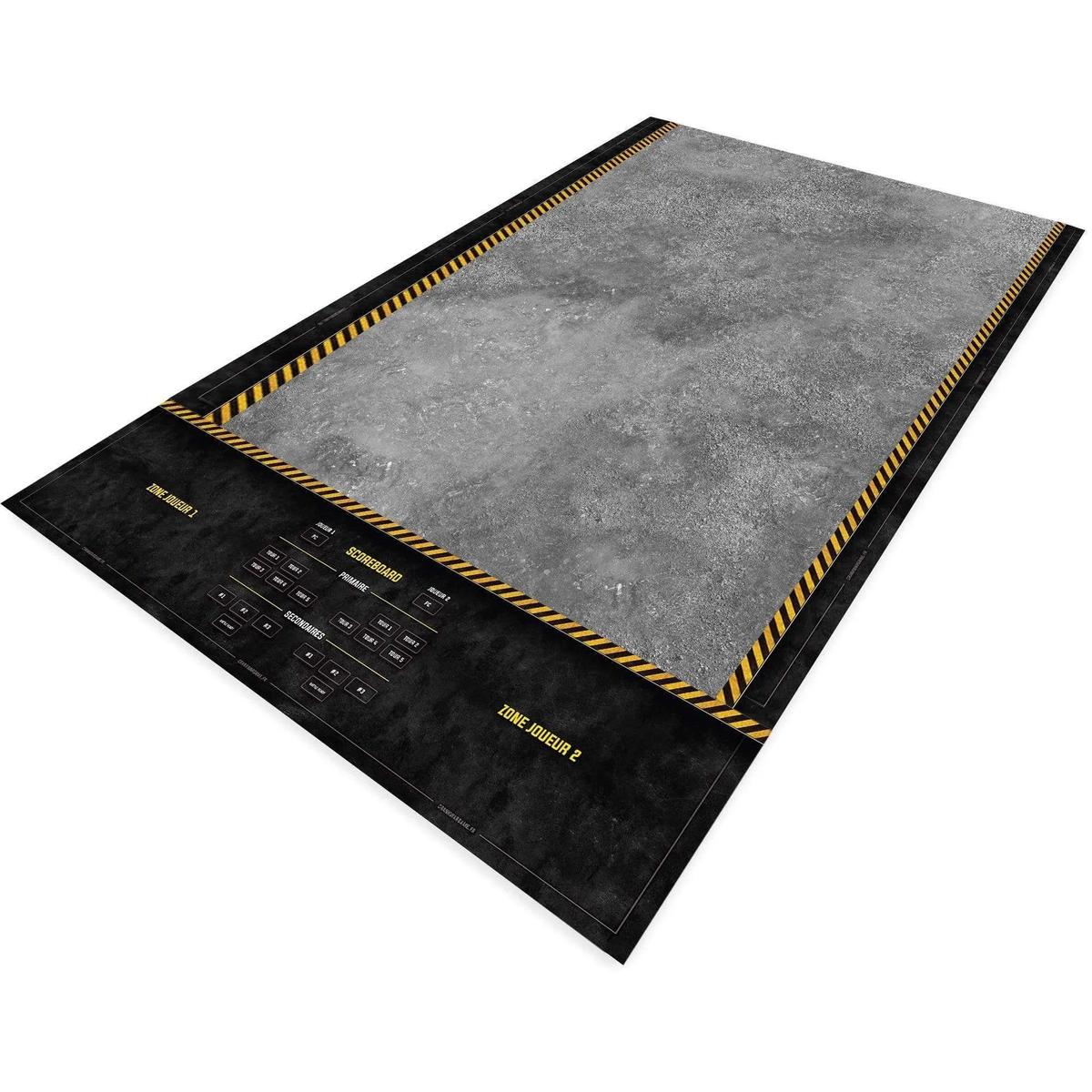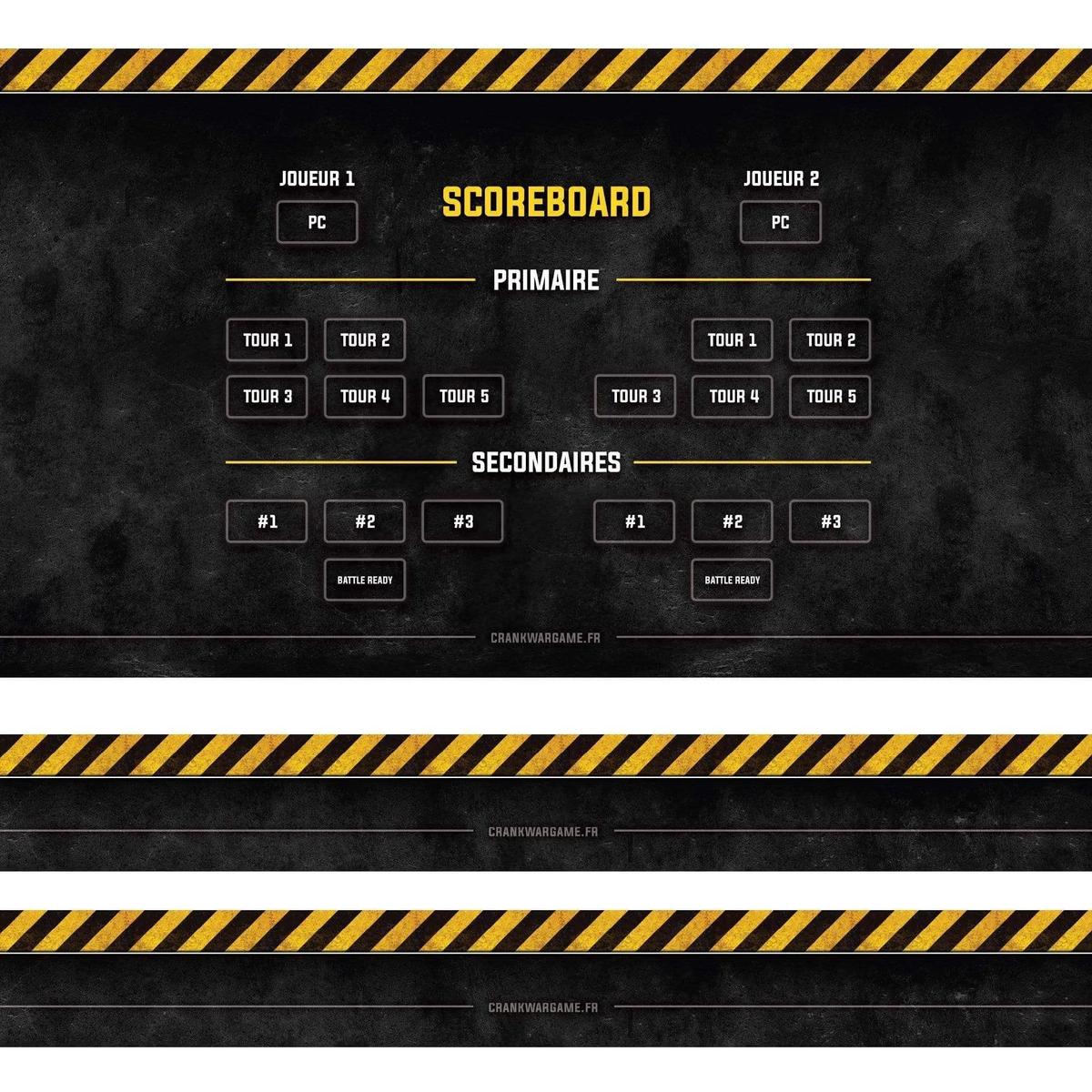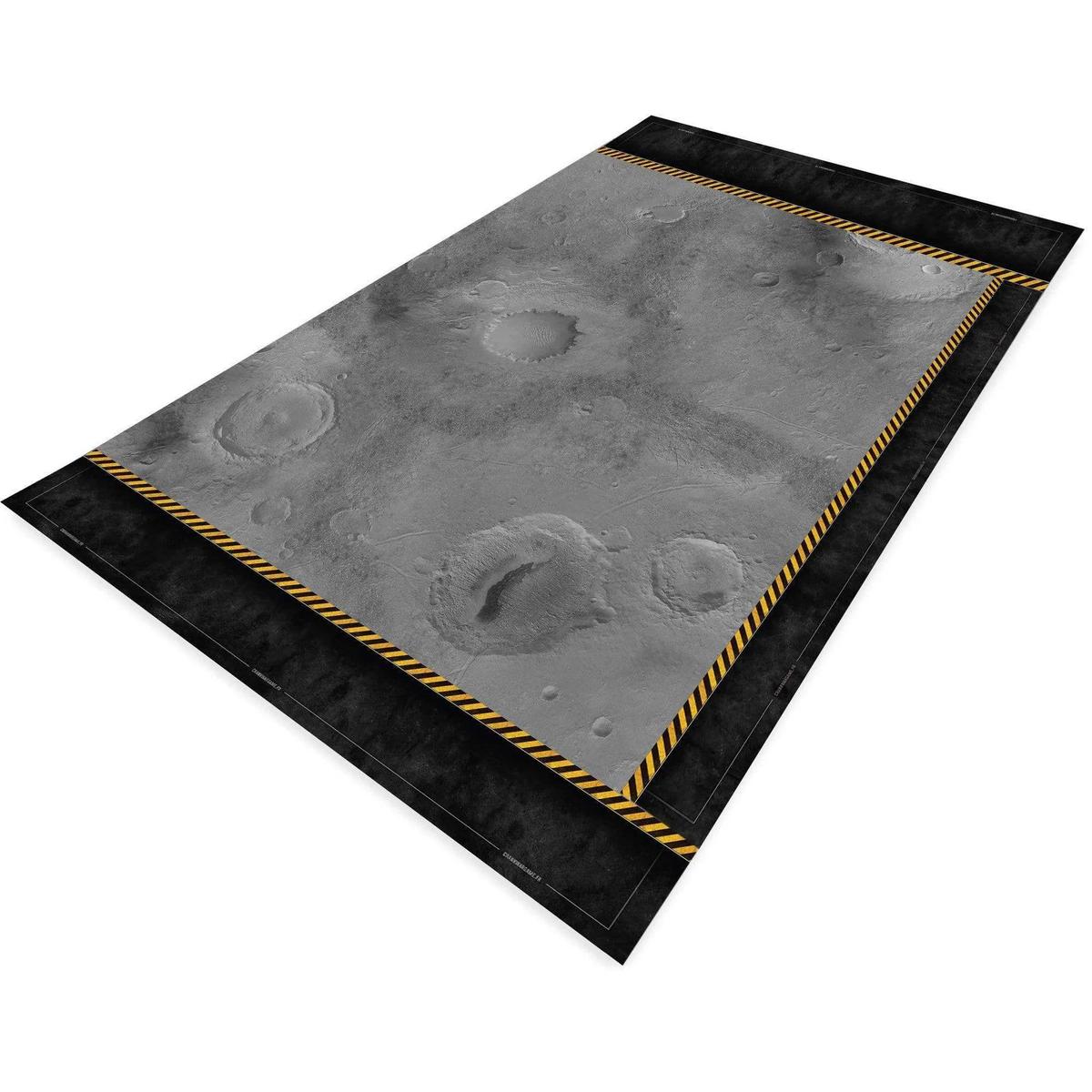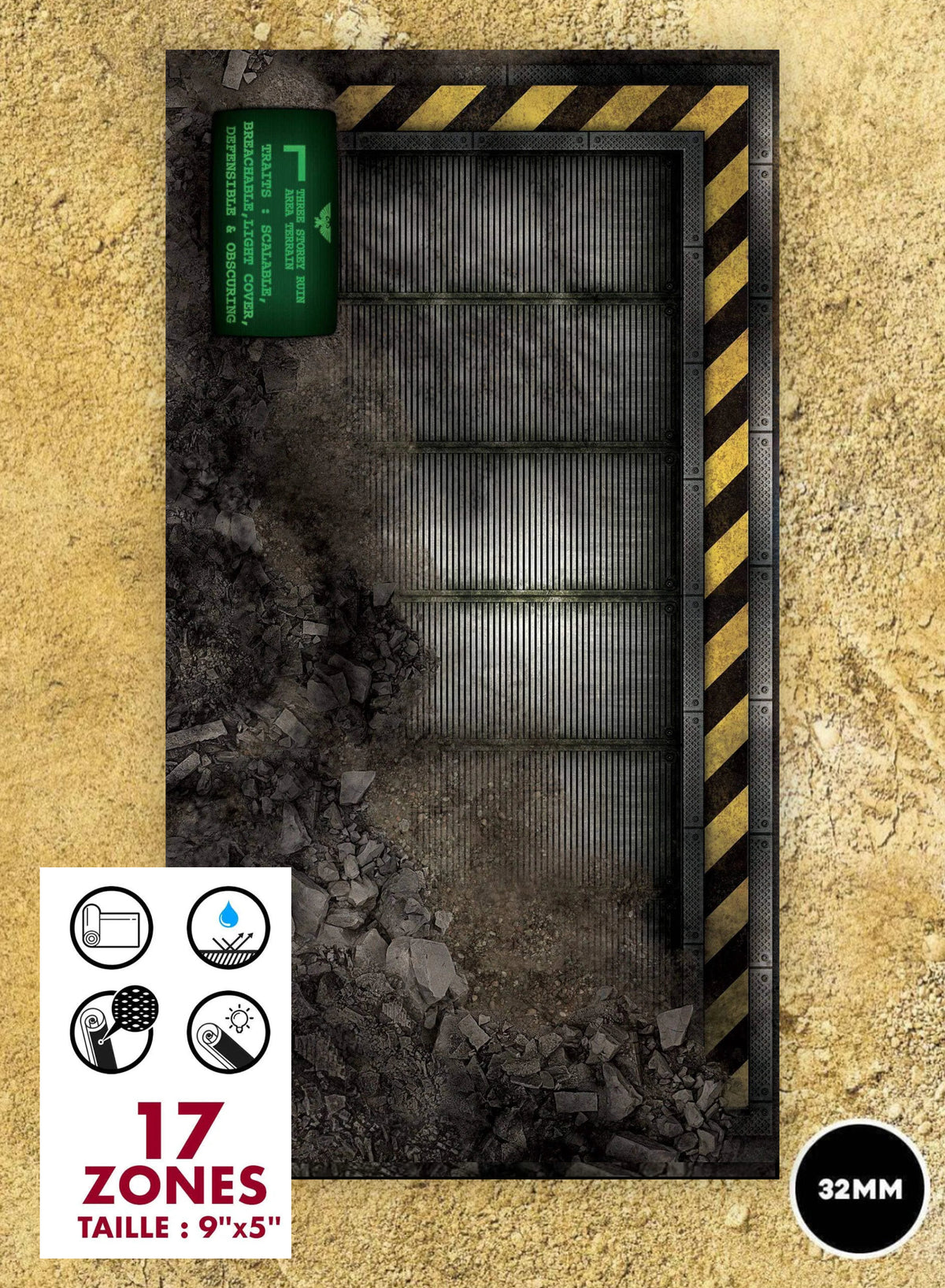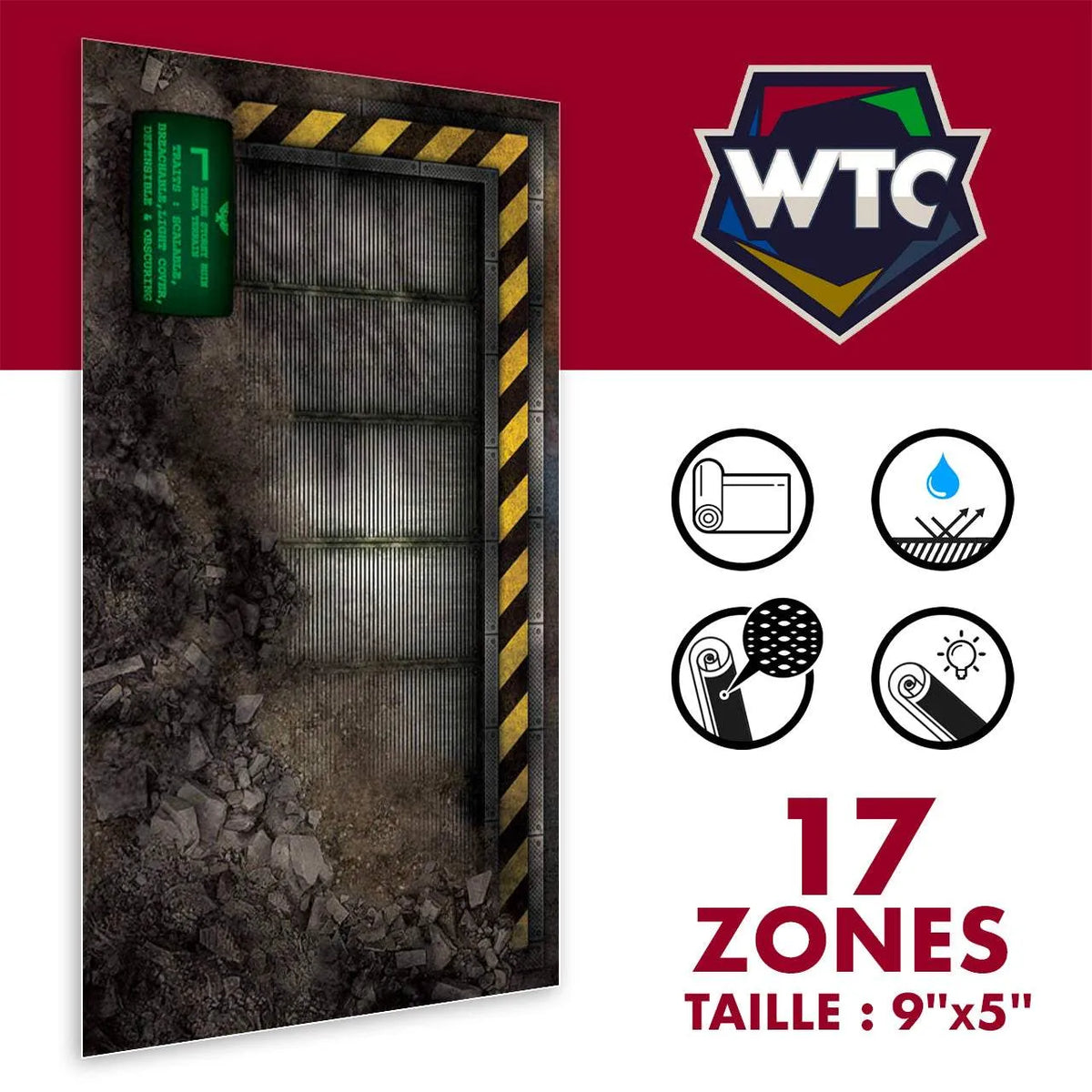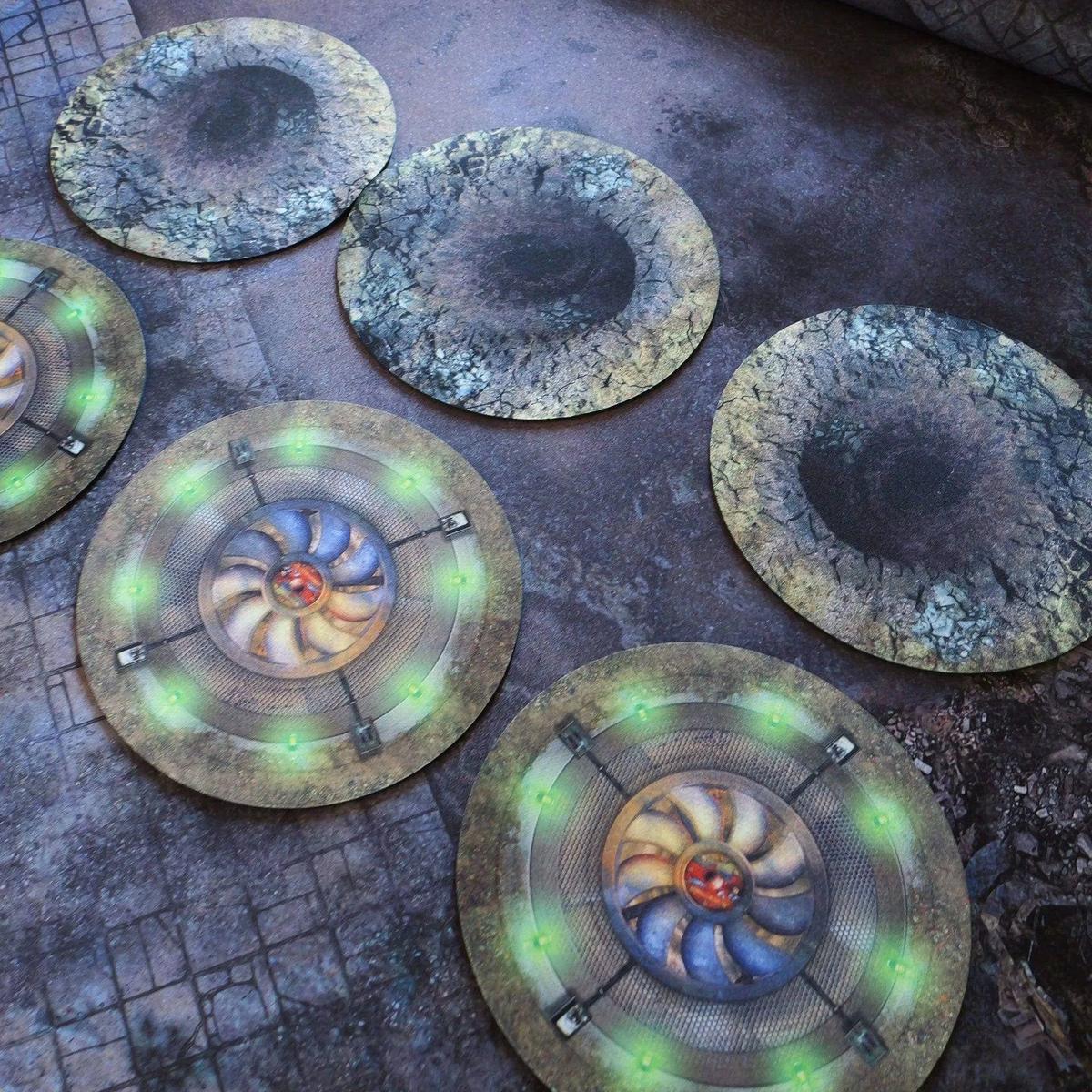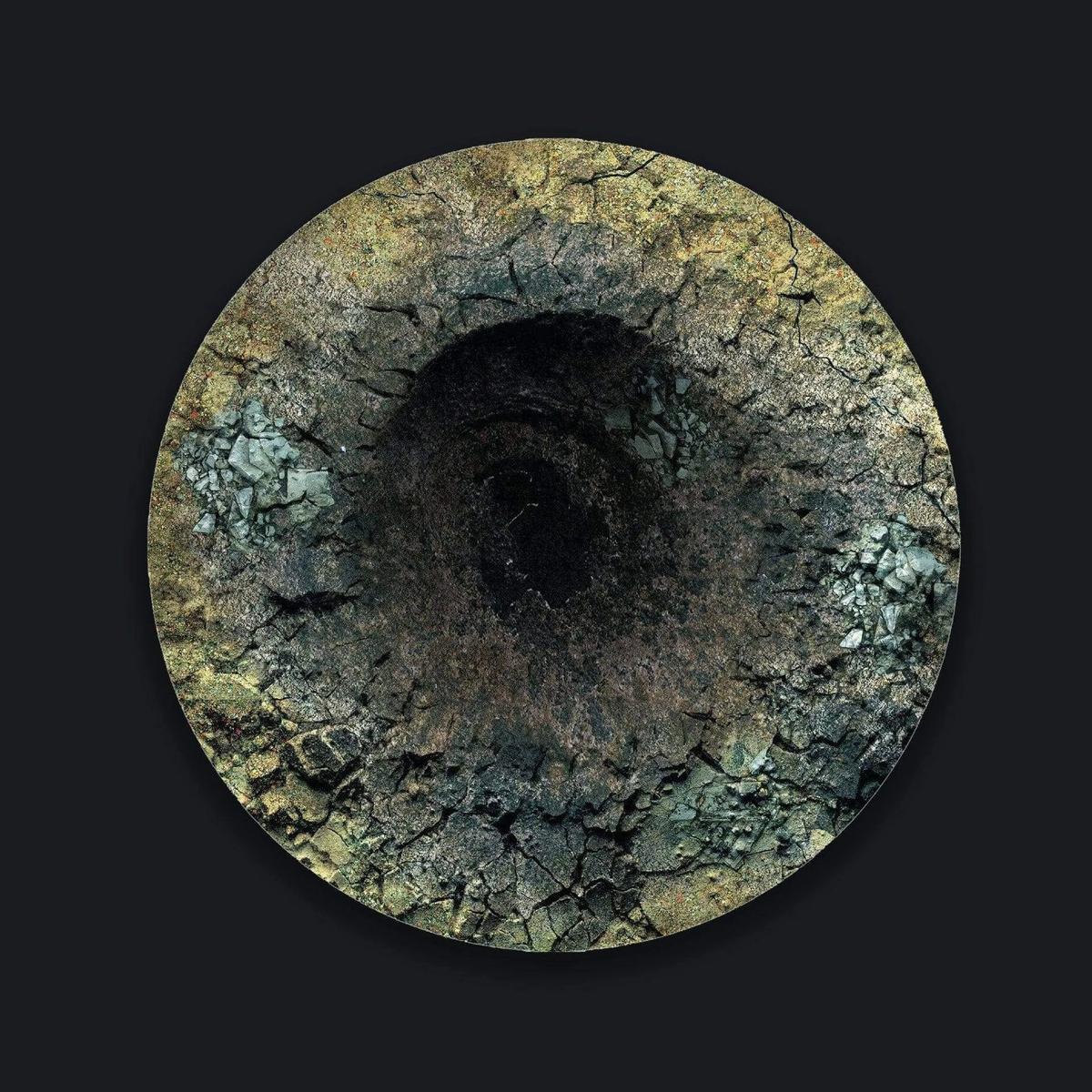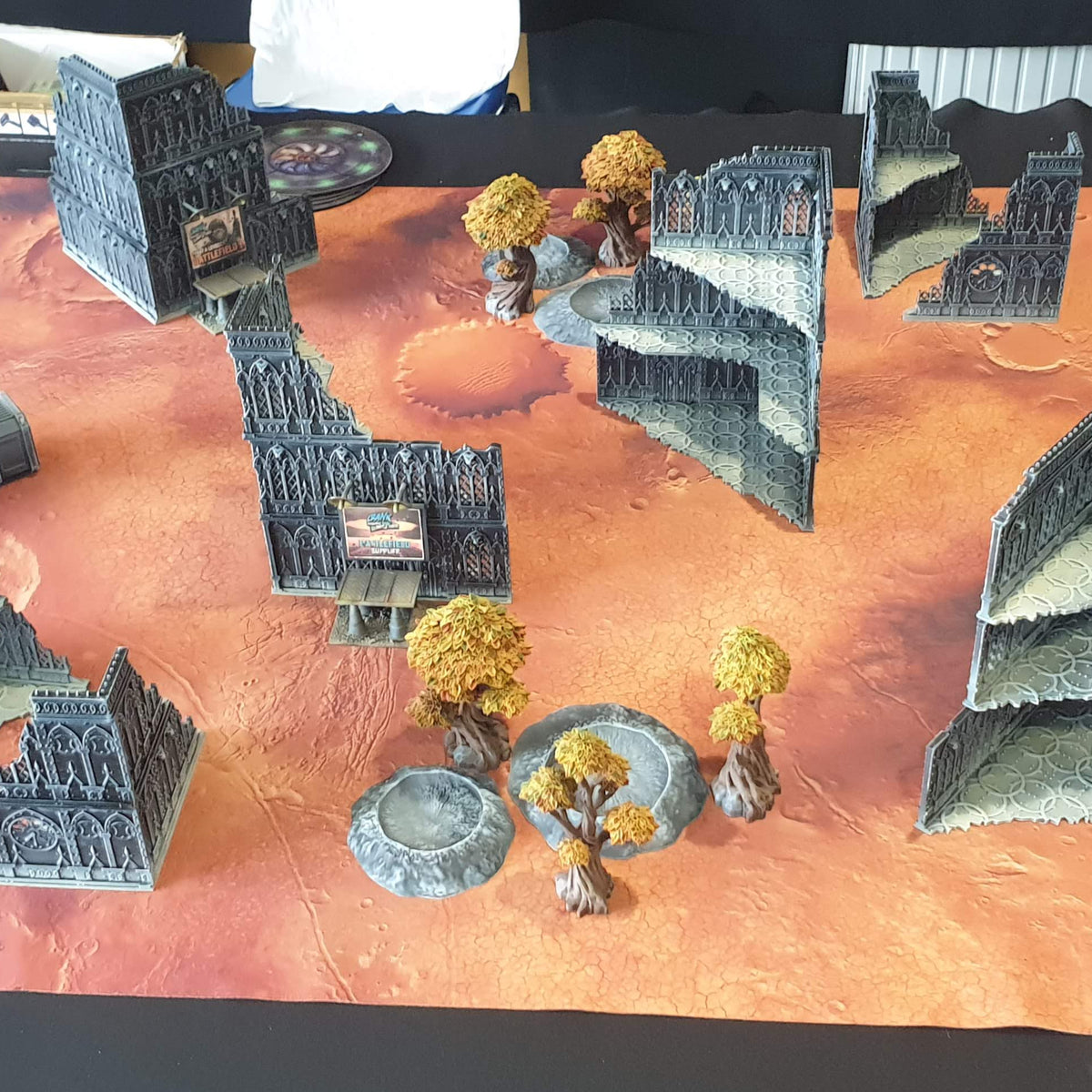Generic scenarios do not capture the essence of the factions in Warhammer 40K and Age of Sigmar . To enrich your games and make each faction unique, here is what thematic scenarios bring:
- Enhanced Immersion : Delve into the story and motivations unique to each faction.
- Suitable objectives : For example, Tyranids consume everything in their path, while Space Marines protect Humanity.
- Varied Gameplay : Specific rules and deployments force you to adapt your strategies.
- Unique Battlefields : Use terrain and playmats that reflect each faction's universe.
- Memorable Moments : Special events and cinematic rules add dynamism.
Creating custom scenarios transforms your games into captivating adventures, where each faction shines with its own style and identity. Ready to bring your battles to life?
WARHAMMER 40,000 FACTIONS EXPLAINED! - PART 1: IMPERIUM
Understanding the lore and playstyle of the factions
To create compelling storylines, it's essential to understand the essence of each faction. Lore, or the story that shapes a faction, goes far beyond a simple setting: it influences their strategy, goals, and how they achieve victory. Each faction has a unique identity, shaped by its past, deeper motivations, and methods of combat. This understanding is key to delivering immersive and memorable gaming experiences.
Take the Tyranids, for example. They fight neither for glory nor to expand an empire, but are driven by an insatiable hunger that drives them to consume everything in their path. This characteristic must be reflected in the scenarios you design: their objectives must be aligned with their predatory nature and their relentless quest for biomass. Such a narrative approach not only adds depth to the game, it also strengthens players' attachment to their factions and units.
Analyze the lore and motivations of the factions
The factions' motivations are as varied as they are fascinating. Space Marines, for example, fight for the survival of humanity, while Orks engage in battle simply for the thrill of chaos and destruction. These fundamental differences must be reflected in the scenario objectives.
For the Aeldari , their desperate quest for survival in the face of extinction guides all their actions. A scenario dedicated to them could focus on the recovery of ancient artifacts or the evacuation of civilians, rather than a simple armed confrontation. Their fighting style, based on precision and efficiency, rather than brute force, should also be reflected in the victory conditions.
In contrast, the Tyranids, with their insatiable voracity, inspire scenarios where their ability to consume and assimilate is emphasized. Game mechanics could reward them for each enemy unit eliminated or for controlling resource-rich areas.
Aligning each faction's goals with their motivations and identity creates a more immersive and engaging gameplay experience. These motivations also influence the tactics each faction employs, opening the door to tailored scenarios.
Mapping Tactical Archetypes
In addition to their lore, each faction adopts distinct combat styles that should guide scenario design. These tactical archetypes determine how an army prefers to engage its opponents and what types of objectives best suit its style.
The Imperial Fists , for example, excel at defending strategic positions, while the White Scars prioritize mobility and lightning attacks. In the Age of Sigmar universe, the Stormcast Eternals embody rigorous discipline and elite power, while the Gloomspite Gitz rely on unpredictable chaos and confounding tactics.
These differences allow for unique scenarios. The Stormcast might excel in liberation or protection missions, while the Gitz might benefit from victory conditions that favor unpredictability and unconventional strategies.
By identifying these archetypes, it becomes possible to create asymmetrical game mechanics that reinforce each faction's identity. A good scenario doesn't just offer generic objectives; it also adjusts the rules to reflect each army's natural strengths and weaknesses. This ensures a balanced gameplay experience while immersing players in a rich and captivating world where each faction feels unique and authentic.
Designing Faction-Based Objectives
Create mission objectives that reflect each faction's narrative and tactical identity. Generic missions detract from immersion: why would the Necrons seek to capture strategic points in the same way as the Orks? Their motivations and methods are fundamentally different, so it's essential to adapt objectives to fit each faction's story and style.
"The goal of a mission in war game design is to reduce lethality."
- the_scotsman, Shadowy Grot Kommittee Memba
This quote highlights the importance of designing objectives that encourage tactical decisions rather than simply eliminating the opponent. Well-thought-out objectives force players to take risks, adding a dynamic dimension to the game. Here's how to structure these objectives to reflect the specificities of each faction.
Primary and secondary objectives
A tiered objective structure helps balance the factions' natural strengths and weaknesses while respecting their identities. Primary objectives embody the main mission, directly tied to the faction's lore and motivations. Secondary objectives, on the other hand, provide additional opportunities to score points.
- Necrons : Their primary goal may be to recover ancient technological artifacts, symbolizing their quest to restore their former glory.
- Orks : They might excel in missions focused on destroying vehicles or structures, reflecting their love of brutality and chaos.
- Space Marines : Protection or rescue missions would be appropriate for their role as defenders of Humanity.
This differentiated approach avoids imbalances in missions. As Nurglitch, a member of the Decrepit Dakkanaut, explains:
"Kills should never be worth points if some other action would earn them, because killing the other guy first will always be the optimal strategy."
- Nurglitch, Decrepit Dakkanaut
By taking these principles into account, missions can become more engaging and strategic, while respecting the unique characteristics of each faction.
Differentiated objectives to enrich the story
For a richer and more immersive narrative experience, adopt asymmetric objectives that reflect each faction's unique priorities and combat styles. This allows each player to pursue separate missions, rather than competing against each other over identical targets.
For example, an Aeldari detachment might succeed in a mission by recovering a key artifact and retreating quickly, even if it suffers heavy losses. Meanwhile, the Tyranids might score points by assimilating eliminated enemy units or controlling areas rich in biomass, reinforcing their role as cosmic predators.
To ensure balance, victory conditions must be carefully adjusted. A fast-moving faction like the White Scars might have objectives scattered across the map to exploit their mobility, while a defensive faction like the Imperial Fists would focus on protecting strategic areas.
Finally, the use of themed playmats , such as those from Crank Wargame, enhances immersion. For example, a mat depicting the ruins of a forge world is perfect for a mission where the Necrons are seeking to recover technological secrets. Similarly, a dense jungle is suitable for Ork raids or Tyranid ambushes. These visual elements reinforce the narrative impact and make each game memorable.
Creating immersive battlefields
The visual aspect of a battlefield plays a vital role in player immersion. A well-designed terrain isn't just a backdrop; it tells a story, reinforces faction identity, and offers unique tactical challenges. Every detail of the landscape helps immerse players in the game world. Once the objectives are set, it's time to design a terrain that perfectly reflects the chosen themes.
Aligning the field with the factions
Terrain must be designed to accurately reflect the setting and motivations of the opposing factions, thus reinforcing narrative coherence. Consider a few examples: Space Marines often operate in ravaged urban environments, where Imperial ruins and shattered fortifications underline their role as defenders of Humanity. In contrast, the forces of Chaos prefer dark and corrupted landscapes, where unholy altars and distorted structures create an oppressive atmosphere. Tyranids , on the other hand, require scenery that emphasizes their predatory nature, with organic or biologically modified elements.
Topography also adds a strategic dimension. For example, the Tau exploit high ground to maximize their ranged firepower, while the Orks use rough terrain to conceal their aggressive movements. These variations enrich not only the gameplay but also the overall atmosphere of each battle.
Crank Wargame Playmats: An Ideal Foundation
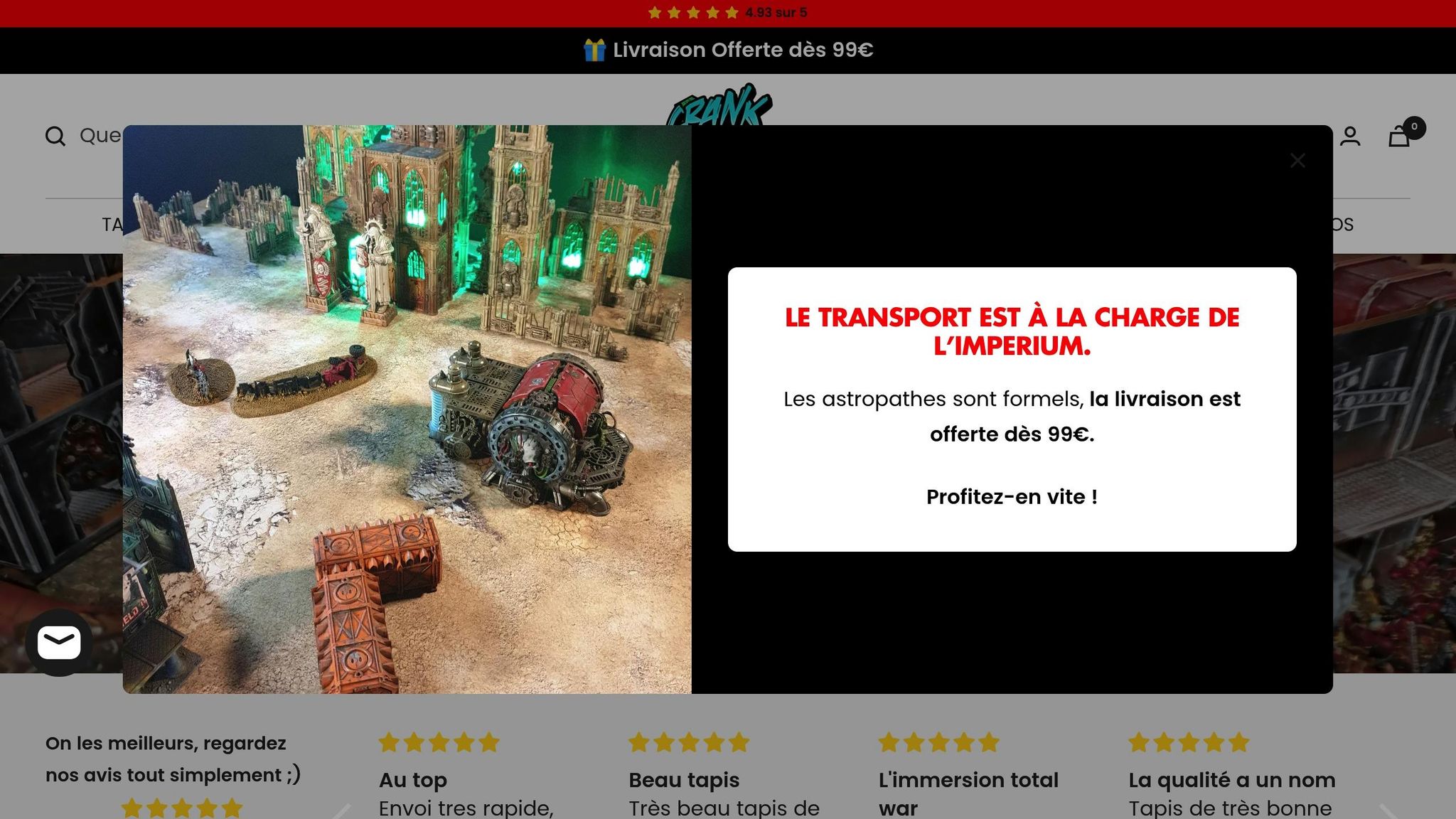
For a visually impressive and lore-accurate battlefield, Crank Wargame's neoprene gaming mats are a great solution. Their HD printing and optimal thickness provide a high-end playing surface, instantly transforming the atmosphere of your games. The double-sided models, available for €99.90 , allow you to explore multiple scenarios: imagine going from an intact imperial city to a devastated version after an orbital bombardment, thus enriching the narrative and tactical possibilities.
These mats are also practical: their hydrophobic, non-slip surface ensures a smooth gaming experience, while their rounded edges prevent miniatures from getting caught on each other while moving. To maximize visual impact, be sure to structure the board by placing central elements at the heart of the action, while adding accessories that blend harmoniously into the scenery. Also, make sure the bases of the terrain elements match the mat for seamless integration, and consider using artificial lichen to reinforce the visual unity.
The modular design of Crank Wargame accessories offers valuable flexibility. You can start with a basic set and gradually expand your collection according to your needs and thematic desires. This allows you to adapt each game to a variety of scenarios, while ensuring total immersion.
Add cinematic rules and special events
Special rules and dynamic events can transform a simple game into a true narrative adventure. These elements bring units to life and create memorable moments that remain etched in the players' memories. The idea is not to weigh down the game, but to enrich the experience by introducing unexpected situations that reflect the brutal and unpredictable universe of Warhammer 40K .
Trigger narrative events
These events are designed to occur at key moments in the battle, adding drama. By combining predictable triggers with unpredictable effects, they allow players to anticipate without having to control everything.
- Space Marines : Reinforcements arrive via assault pods when the enemy captures a strategic objective. The type of reinforcement depends on a die roll: tactical squad, Dreadnought, or a Captain accompanied by his honor guard.
- Tyranids : If a synapse entity is eliminated, lesser creatures may panic or enter a cannibalistic frenzy. Reinforcement spores appear regularly, illustrating the constant pressure exerted by the swarm.
- Forces of Chaos : Events revolve around the corruption of the Warp. An unholy altar can cause random mutations or open a dimensional rift, allowing daemons to appear.
Add mood modifiers
Once events are triggered, the battlefield environment evolves to accentuate these key moments. These modifiers add unique tactical challenges while deepening the immersion in the story.
- Psychic Storms : These affect each faction differently. Psykers suffer debuffs or receive random bonuses, while Culexus become temporarily more powerful. The Tau, while immune to these effects, may have their communication systems disrupted.
- Radiation Fields : These danger zones migrate depending on winds or explosions. The Death Korps of Krieg naturally resist them, while the Eldar suffer significant penalties.
- Unstable Warp Gates : These risky shortcuts change the tide of battle. Each attempt to pass through requires a die roll: a critical success guarantees instant movement, while failure results in damage or temporary disorientation.
A striking example: in Titanicus , the destruction of a Titan triggers a spectacular effect (cataclysmic explosion, fire or collapse), transforming each major loss into an unforgettable moment.
These modifiers should primarily encourage smart tactical choices rather than punish mistakes. For example, a malfunctioning force field can provide temporary opportunities, prompting players to adjust their strategy in real time.
These cinematic mechanics open the way to a testing and balancing phase where every decision can have a decisive impact.
sbb-itb-9f5a185
Test and balance scenarios
Creating a thematic scenario never ends with its first draft. Even the most seasoned designers don't achieve perfect balance from the start, as many factors can disrupt this balance. It's during the testing and tweaking phase that you decide whether your scenario will become a memorable experience or be forgotten. Here are some concrete methods for effectively testing your scenarios.
Test with groups of players
Group testing is essential for spotting imbalances that aren't obvious on paper. Players, with their outside perspective, often detect flaws or dominant strategies that designers might not see. They also provide valuable perspective for tweaking mechanics that might otherwise prove frustrating.
“You’ll almost never get your game balanced the first time. There are just too many variables to consider.” – Dan Felder, Blogger
A particularly useful method is Triple Tapping , which involves deliberately overdoing adjustments. For example, if an Adeptus Mechanicus special ability seems too powerful, drastically reduce it. Conversely, if the Tau 's secondary objectives seem too complex, simplify them significantly. This approach provides accurate data to quickly identify an optimal balance.
When testing, prioritize slightly overvalued abilities. This allows players to fully explore their potential. An undervalued ability risks being overlooked, depriving you of valuable information about its effectiveness.
“Players can see what the designer and his friends are going to miss. They aren’t married to the game and have the right distance to break it.” – Blood and Spectacles Publishing
To maximize feedback, test your scenarios with a variety of players: beginners, veterans, competitive players, and narrative players. Beginners will help you assess the clarity of the rules, while veterans will push the limits of the system. Always keep your design goals in mind to stay true to your initial vision.
Using Props for Scenario Management
Beyond gameplay testing, clear game information management is crucial for fine-tuning balance. Complex scenarios often generate a wealth of data to track: victory points, triggered events, temporary modifiers, or objective status. Crank Wargame playmats are a great help, providing visual cues for positioning objective markers and demarcating specific areas.
Other accessories, such as scoreboards or dice trays, centralize important information. Colored markers make it easier to identify different objectives or areas of effect for special events. A well-thought-out color system allows testers to quickly visualize the state of the battlefield and limits misinterpretation.
If certain mechanics continue to be problematic after several iterations, consider removing them. A good scenario should offer multiple tactical approaches, each with its own strengths and weaknesses.
Finally, add safeguards to your rules to allow players to rebalance the game in case of unforeseen imbalances. For example, if one faction accumulates victory points too quickly, introduce an event that redistributes resources or creates opportunities for other players.
Careful balancing is key to designing memorable gameplay experiences, where each faction can shine through its thematic particularities.
Conclusion: Creating Memorable Experiences
Integrating faction-specific thematic scenarios profoundly transforms the gaming experience. These scenarios, rooted in each faction's unique identity, create a natural link between game mechanics and narrative, thus providing total immersion.
As mentioned earlier, these scenarios help relieve the pressure of victory, inviting players to experiment with new strategies. This approach encourages the discovery of unexpected synergies between units, encouraging players to explore often-overlooked elements of their collection. This enriches not only the gameplay, but also the overall experience.
For beginners, these scenarios offer an accessible entry point. By simplifying complex rules while remaining captivating, they allow for moments worthy of novels or films, where each unit acts as a hero in the story. These cinematic moments add a unique depth to each game.
Visuals also play a major role in this immersion. Crank Wargame mats , made of high-quality neoprene, provide an aesthetic and functional touch. Their high-definition prints, matched to specific themes, perfectly delineate objective areas while reinforcing the atmosphere specific to each faction. These visual details, combined with well-designed accessories, eliminate distractions and allow players to fully concentrate on the unfolding story.
With these elements, each game becomes much more than a simple tactical confrontation. It transforms into a story-rich adventure, where players leave with lasting memories and the desire to relive these epic moments. These shared moments contribute to a vibrant and passionate gaming community.
In short, thematic scenarios redefine wargaming. They transform each game into a captivating narrative experience, revealing the full creative potential of miniature collections. This not only provides hours of renewed fun, but also allows each faction to fully shine on the battlefield, with all its personality.
FAQs
How to create an immersive battle scenario tailored to a specific faction in Warhammer 40K or Age of Sigmar?
Design a thematic scenario for Warhammer 40K or Age of Sigmar
To create a scenario that captures the essence of a faction in Warhammer 40K or Age of Sigmar , start by delving into what defines that faction: its history, motivations, and flagship units. For example, Space Marines often symbolize courage and sacrifice, while Chaos factions emphasize themes of corruption and destruction. These elements can serve as the basis for establishing narrative objectives, whether that's defending a sacred artifact or ravaging enemy territory.
Then adapt the scenario structure to the faction's playstyle. If you're playing an offensive-oriented faction, consider missions focused on rapid assaults or ambushes. For a more defensive faction, consider scenarios involving sieges or the protection of strategic areas.
To enhance immersion, consider incorporating accessories like Crank Wargame 's themed playmats. These mats, designed to complement the visual worlds of Warhammer 40K and Age of Sigmar , add an aesthetic dimension that will make your games even more captivating.
What elements can you use to make your thematic scenarios more immersive and adapted to each faction?
Create Immersive Scenarios
To transform your games into true adventures, rely on thematic playmats and settings adapted to your faction's universe. Imagine mysterious ruins, dense forests, or steep hills: these visual elements add incredible depth to the atmosphere of your scenarios.
To take things even further, add meticulously detailed figurines and, why not, special effects like LED lighting or damage markers. These small touches make the experience even more immersive and leave a lasting impression on players. Every detail counts to fully immerse themselves in the game's universe.
How to design and test a balanced thematic scenario to ensure an immersive and fair gaming experience for all factions?
How to create a balanced thematic scenario?
To build a successful thematic scenario, start by defining clear objectives tailored to each faction. These objectives should be both achievable and fair, taking into account the strengths and weaknesses of each side. The playing field should be carefully designed, offering balanced strategic opportunities for all participants.
Another crucial element: regular playtests . Test your scenario with different groups of players to identify potential imbalances. These sessions allow you to adjust the rules or modify certain elements of the terrain based on feedback. These adjustments ensure an immersive, competitive, and enjoyable experience for everyone.
Finally, consider incorporating quality accessories, such as themed playmats. These elements don't just beautify the board; they enhance immersion and add a visual strategic dimension that can enrich the overall experience.
